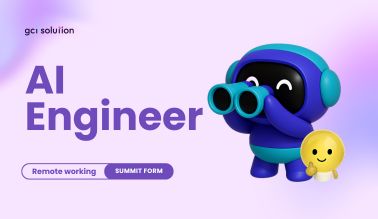As the CTO at GCT Solution, Mr. Vuong Do Quoc manages software development activities for customers based mainly in the US and APAC region. He oversees and supports complex projects across different industries (E-commerce, FinTech, Blockchain, Mobile apps, etc.), as well as helps businesses improve their management practices and implement the latest technologies. In this article, he’s going to share some of the winning fundamentals for hiring and managing your remote software development team.
1. Quality comes first
Companies outsource for a variety of reasons, including cost savings and increased flexibility and availability. While these factors must be addressed, I recommend prioritizing quality above all.
Examine the top outsourcing locations’ rankings, select a few that appear to be the most potential, and conduct as much research as possible on them. How about work ethics in these countries? How many technical universities are there in the country? Have you heard of any successful startups here? Are there any established corporations with R&D offices here? What about foreign language skills in the tech industry? All of these are critical inquiries.
If possible, go through your professional network for someone who has lived in these countries and ask them about their experiences.
In an ideal thought, you’d pick a place having the least time difference from you. However, time zones should not be at the top of your priority list. With an iterative approach to software development, you’ll be able to work around any time differences.
2. Find the right provider and treat them as your partner
There are three basic collaboration models when it comes to offshore software development — working with freelancers, traditional outsourcing, and the extended team model (staff augmentation).
I’m not going to dive into dealing with freelancers for the sake of this essay. Instead, I’ll focus on the other two models. I’m also not going to tell you which one is better or worse because both can be used successfully based on your requirements.
Traditional outsourcing is something that most people are familiar with. You locate a provider, provide them with your specifications, the supplier assigns your project to a development team, you sign the papers, and the team begins work. You don’t get to pick who works on your product with this approach, and you have very little control over the development process. Your team will be managed by the vendor’s project manager, and you will only be involved in scope definition and deliverable approval.
The extended team approach, on the other hand, gives you complete control over the development process. The vendor acts as a middleman, analyzing your business requirements and assisting you in forming the appropriate offshore software development team for your product. You have the right to approve and manage the members of your development team. Your offshore developers become an organic extension of your in-house development team.
I recommend that you make a list of the most important questions you have about your possible partners before making your decision. To get you started, consider the following suggestions:
- Does the vendor have a quality management system?
- Are they certified?
- How do they manage risks?
- Do they have vertical and technical business specializations?
- What was the vendor’s success and failure over the last year?
Look for well-known names on the vendor’s customer list. Also, keep an eye on local websites for employee feedback. Travel to the vendor’s office is much better. Take a look around, talk to the personnel, and find out if they’re happy with their jobs.
3. Hire Right People
Everyone understands that a team of competent and motivated engineers is the key to every successful software project. Finding them might be difficult, so here are some pointers to assist you:
- Make sure you have a professional recruiter who understands exactly your business goals and requirements. They prevent you from wasting time and making bad choices.
- Get into the habit of being personally involved in the interviewing process. Take the time to see whether the personality of the interviewee will fit your company’s culture.
- Soft skills are as important as technical expertises. Ask open-ended questions, and pay attention to the candidate’s communication style and body language.
4. Get the Development Process on the Right Track
It’s time to put your growth strategy into action as soon as you find your dream team. To make sure it’s effective, brainstorm potential difficulties between you and your offshore software development team, then come up with solutions.
For example, you are aware that remote work arrangements rely heavily on communication technologies. As a result, you must ensure that your video conferencing, task tracking, screen sharing, and instant messaging technologies are dependable and configured appropriately.
To minimize misunderstandings during the early phases of software development, I recommend that all team members’ roles and duties be clearly defined. Firstly, determine who will serve as the project manager, who is in charge of customer and stakeholder communication. The product owner should have a thorough understanding of your customers’ requirements, then convey them to the development team.
A software development methodology is another tool that may help you expedite the development process. My personal favorite is Scrum. This concept works effectively in continuously changing environments because it allows responsiveness. Agile approaches, on the other hand, aren’t acceptable when you have a well defined scope. As a result, it’s always a good idea to consider your company environment before making the final decision.
Another thing to remember is to plan ahead of time. Take a look at the two most important processes: performance and delivery. Do you have a detailed plan for ensuring high performance and accepting deliverables?
The answer is already in the Scrum process. With the use of standard meetings and artifacts, the project manager can keep up-to-date information within a cross-functional development team. Daily planning, backlog refinement, sprint review, and retrospective sessions are all part of the Scrum meeting calendar. You’ll still need to arrange meetings for planning and reviewing work, as well as for daily communication, if you choose another method. If you properly structure the continuous improvement process, your development technique will progress alongside your team.
5. Promote Your Company Values
The selection of a methodology, the planning of the development process, and the definition of roles and duties are all critical aspects. They won’t work, though, until you apply them to the correct culture.
Commitment is always the most important thing to me. Aside from that, I recommend instilling key values such as Focus, Openness, Respect, and Courage in your team culture.
“Always stay proactive and share your ideas with the rest of your team. The more dedication you show, the more dedication you’ll get in return.”
Ascertain that your staff understands your product’s objectives as clearly as you do. Share your product vision and plan with the team to ensure that everyone is on the same page.
“Promote courage and openness — your team shouldn’t be afraid of mistakes.”
Eventually, appreciate your colleagues and try to pay them a visit at their workplace if possible. You may either talk about the project’s development or just have a good time talking with them. What counts is that you are trying to be close to your team members.
Key takeaways
Don’t start counting your developers until they’ve been hatched. I hope you find my suggestions beneficial and put them into practice. IT development is becoming increasingly popular and beneficial for organizations in light of Covid-19. Once you’ve mastered it, you’ll be able to ensure your company’s success.
And if you need assistance constructing your offshore development team, I’d be delighted to listen to your goals and requirements. Just leave your contact details in the comments below and I’ll get back to you. Cheers!
Don’t forget to follow GCT Solution for useful IT-related articles!






